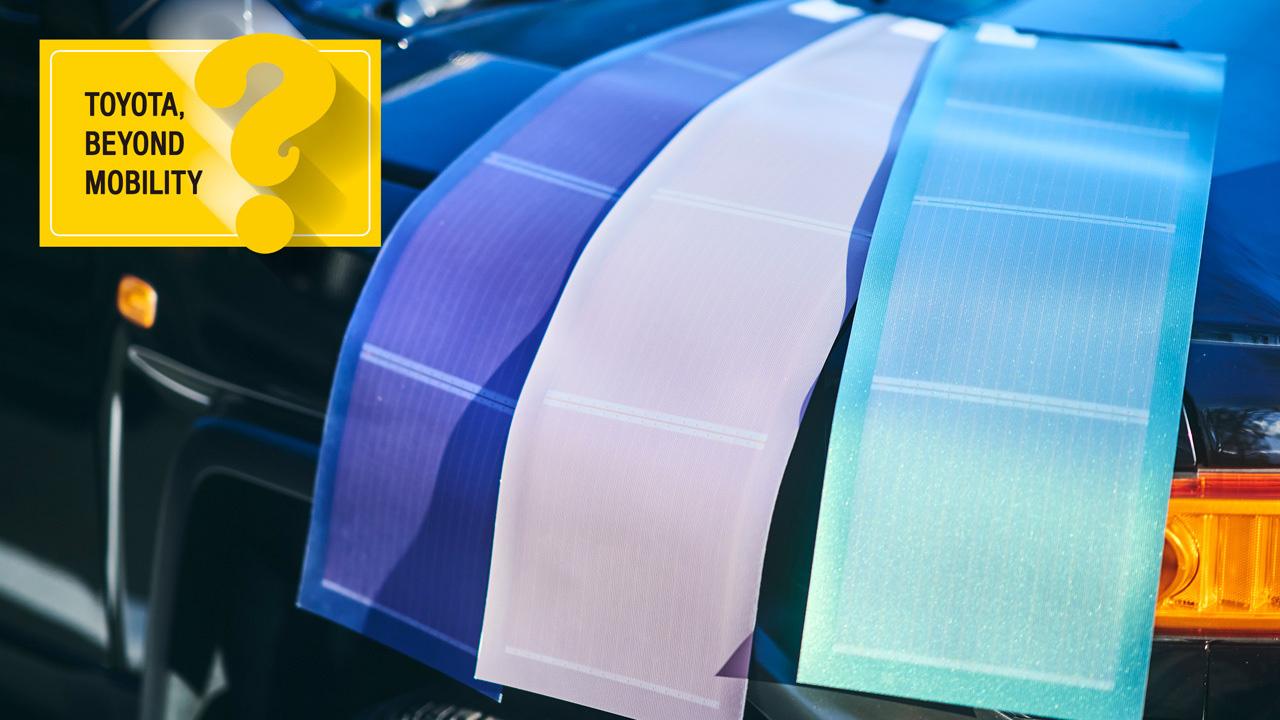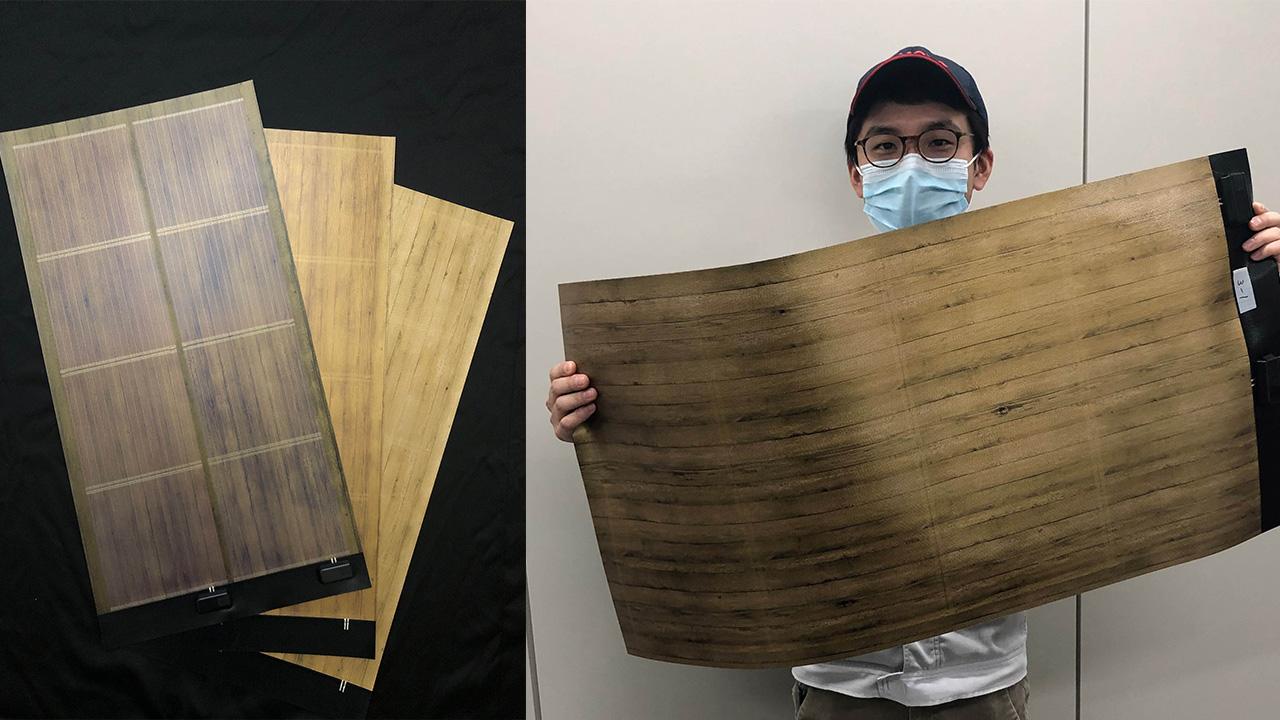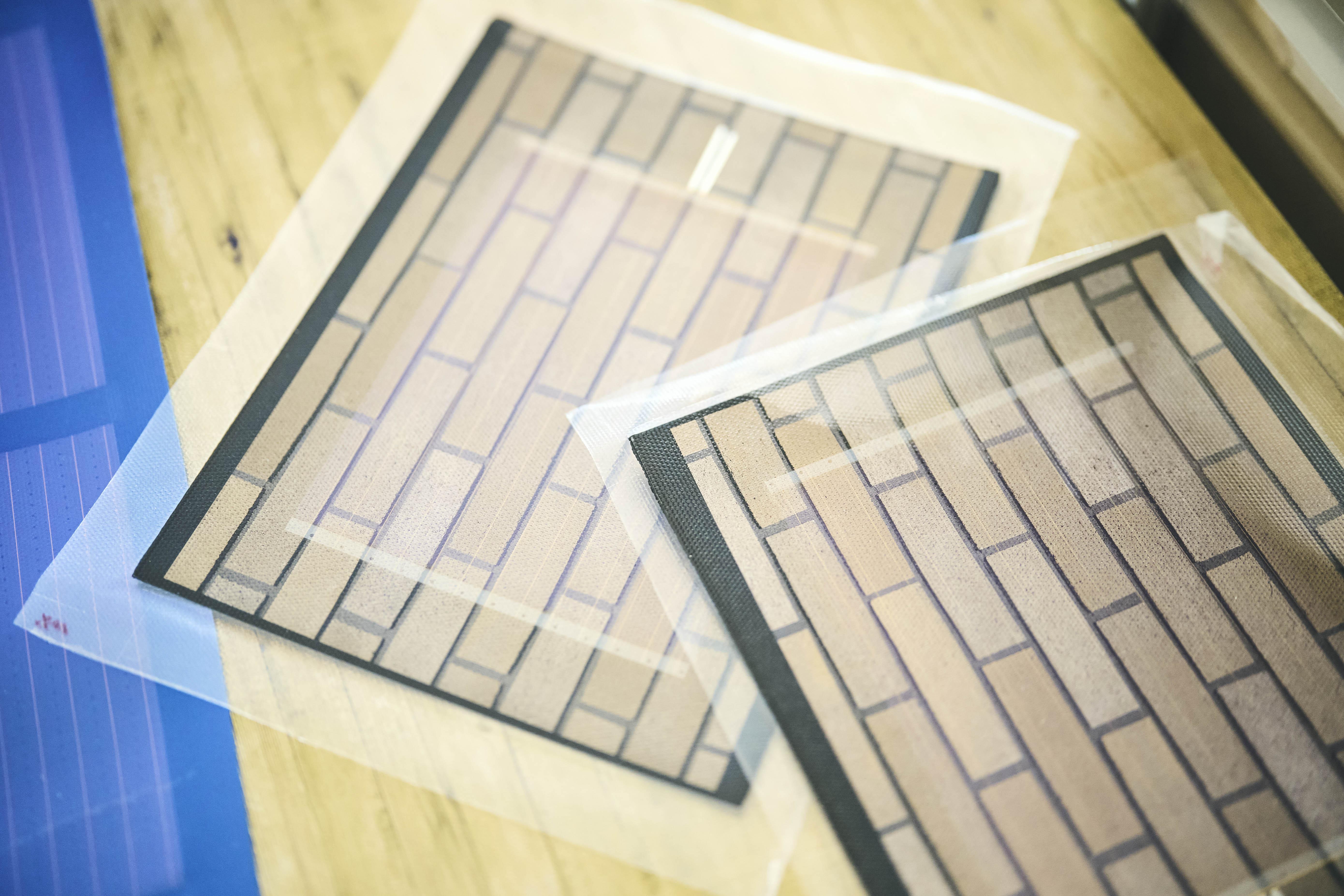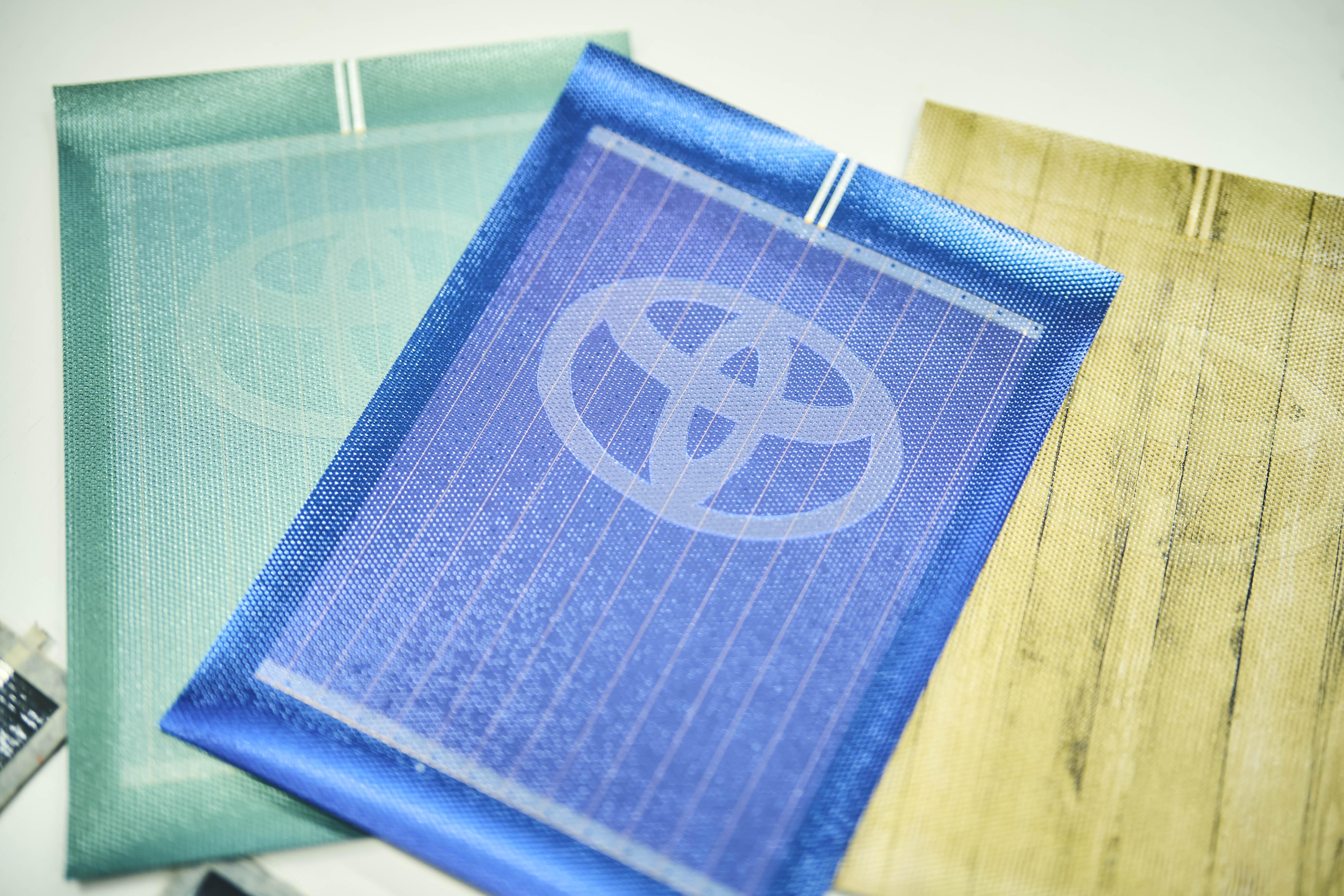
This series introduces Toyota's research in non-automotive fields. This time, we offer a look at shape-shifting solar cells.

Have you ever imagined clothes or accessories that generate electricity as you walk around town? Such a dream could become reality.

For example, the item pictured above (left) can serve as a portable charger for smartphones and other devices. It is wrapped in one of the camouflage-patterned sheets (right) that are actually solar panels capable of generating electricity.
Solar panels are typically black, inorganic objects. Toyota’s research, however, has made all kinds of designs possible, ranging from the camouflage patterns above to wood grains like those shown below.

To find out more about the underlying technology, Toyota Times spoke with the in-house inventor who developed it.
No place for panels? No problem
Let’s start by recapping the current position of solar power.
The Japanese government has vowed to achieve carbon neutrality by 2050. To reach this goal, it is pushing for greater use of renewable energy sources that do not emit CO2. The Tokyo Metropolitan Government has even enacted an ordinance requiring new homes to be outfitted with solar panels.
There is, however, a big problem.
Meeting the national 2030 target for solar system adoption would require panel installation to double from the current level.
Unfortunately, Japan has limited flat land available. At the same time, large-scale solar plant projects may run afoul of residents who wish to protect the local scenery.
Toyota’s solution is to create solar panels with freely customizable color and pattern designs. The idea is that, since they blend in with the urban landscape, such panels can be installed in places not previously considered, like the walls of city buildings.

Normally, coloring solar panels blocks the sunlight, preventing them from generating electricity. To overcome this issue, the developers set out to create thin decorative films that can be applied to panels. As it turns out, they drew on technology unique to carmakers.
A carmaker’s take on solar panels
Taizo Masuda, Ph.D. (Engineering)
Group Manager, Carbon Neutral Development Div.

Design is crucial for cars, and Toyota has spent many years developing its painting technologies. Just as you choose a car for its design, you should be able to pick from among many options when selecting solar panels.
We began researching the use of car painting technology six years ago, before the push toward carbon neutrality. Whereas the earth’s resources are limited, sunlight provides an infinite source of energy. We wanted to find a way to combine power generation and aesthetics.
So how does the film allow sunlight to pass through and generate electricity? The secret lies in the pigments used in automotive paint.
They might best be thought of as “translucent,” reflecting only specific colors and allowing all other light to permeate and generate power.
Toyota’s team worked with carmaking partner Nippon Paint Automotive Coatings to develop the technology for producing uniform coloring, and conducted joint research with F-WAVE, a manufacturer and retailer of solar cells.
The result was a world-first technology that supports colorful designs while generating electricity in the same way as conventional black solar panels.

At first glance, solar panel development appears to have little to do with Toyota’s core business, and yet it drew on painting technology that the carmaker had honed over many years.
As Masuda tells, this new technology has the potential to eliminate power outages, a claim that carries weight in an era of frequent natural disasters. We also asked him if it was possible to create “electricity-generating cars” by attaching the panels to vehicle bodies.

